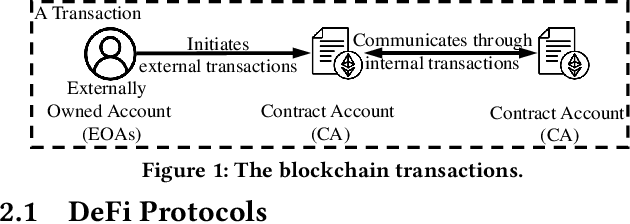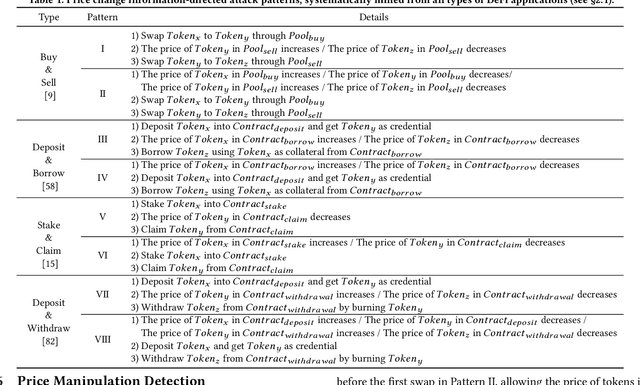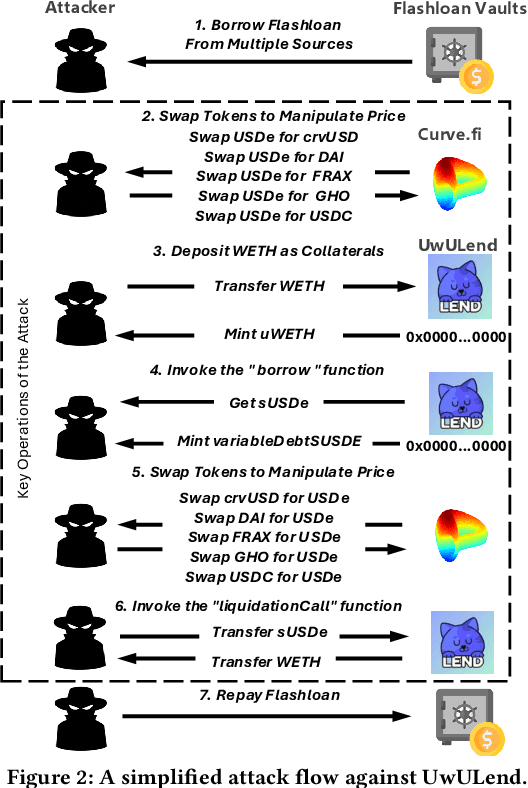Ning Liu
The University of Western Australia
DIFNet: Decentralized Information Filtering Fusion Neural Network with Unknown Correlation in Sensor Measurement Noises
Aug 26, 2025Abstract:In recent years, decentralized sensor networks have garnered significant attention in the field of state estimation owing to enhanced robustness, scalability, and fault tolerance. Optimal fusion performance can be achieved under fully connected communication and known noise correlation structures. To mitigate communication overhead, the global state estimation problem is decomposed into local subproblems through structured observation model. This ensures that even when the communication network is not fully connected, each sensor can achieve locally optimal estimates of its observable state components. To address the degradation of fusion accuracy induced by unknown correlations in measurement noise, this paper proposes a data-driven method, termed Decentralized Information Filter Neural Network (DIFNet), to learn unknown noise correlations in data for discrete-time nonlinear state space models with cross-correlated measurement noises. Numerical simulations demonstrate that DIFNet achieves superior fusion performance compared to conventional filtering methods and exhibits robust characteristics in more complex scenarios, such as the presence of time-varying noise. The source code used in our numerical experiment can be found online at https://wisdom-estimation.github.io/DIFNet_Demonstrate/.
EnerBridge-DPO: Energy-Guided Protein Inverse Folding with Markov Bridges and Direct Preference Optimization
Jun 11, 2025Abstract:Designing protein sequences with optimal energetic stability is a key challenge in protein inverse folding, as current deep learning methods are primarily trained by maximizing sequence recovery rates, often neglecting the energy of the generated sequences. This work aims to overcome this limitation by developing a model that directly generates low-energy, stable protein sequences. We propose EnerBridge-DPO, a novel inverse folding framework focused on generating low-energy, high-stability protein sequences. Our core innovation lies in: First, integrating Markov Bridges with Direct Preference Optimization (DPO), where energy-based preferences are used to fine-tune the Markov Bridge model. The Markov Bridge initiates optimization from an information-rich prior sequence, providing DPO with a pool of structurally plausible sequence candidates. Second, an explicit energy constraint loss is introduced, which enhances the energy-driven nature of DPO based on prior sequences, enabling the model to effectively learn energy representations from a wealth of prior knowledge and directly predict sequence energy values, thereby capturing quantitative features of the energy landscape. Our evaluations demonstrate that EnerBridge-DPO can design protein complex sequences with lower energy while maintaining sequence recovery rates comparable to state-of-the-art models, and accurately predicts $\Delta \Delta G$ values between various sequences.
FreqPolicy: Efficient Flow-based Visuomotor Policy via Frequency Consistency
Jun 10, 2025Abstract:Generative modeling-based visuomotor policies have been widely adopted in robotic manipulation attributed to their ability to model multimodal action distributions. However, the high inference cost of multi-step sampling limits their applicability in real-time robotic systems. To address this issue, existing approaches accelerate the sampling process in generative modeling-based visuomotor policies by adapting acceleration techniques originally developed for image generation. Despite this progress, a major distinction remains: image generation typically involves producing independent samples without temporal dependencies, whereas robotic manipulation involves generating time-series action trajectories that require continuity and temporal coherence. To effectively exploit temporal information in robotic manipulation, we propose FreqPolicy, a novel approach that first imposes frequency consistency constraints on flow-based visuomotor policies. Our work enables the action model to capture temporal structure effectively while supporting efficient, high-quality one-step action generation. We introduce a frequency consistency constraint that enforces alignment of frequency-domain action features across different timesteps along the flow, thereby promoting convergence of one-step action generation toward the target distribution. In addition, we design an adaptive consistency loss to capture structural temporal variations inherent in robotic manipulation tasks. We assess FreqPolicy on 53 tasks across 3 simulation benchmarks, proving its superiority over existing one-step action generators. We further integrate FreqPolicy into the vision-language-action (VLA) model and achieve acceleration without performance degradation on the 40 tasks of Libero. Besides, we show efficiency and effectiveness in real-world robotic scenarios with an inference frequency 93.5Hz. The code will be publicly available.
Neural Interpretable PDEs: Harmonizing Fourier Insights with Attention for Scalable and Interpretable Physics Discovery
May 29, 2025Abstract:Attention mechanisms have emerged as transformative tools in core AI domains such as natural language processing and computer vision. Yet, their largely untapped potential for modeling intricate physical systems presents a compelling frontier. Learning such systems often entails discovering operators that map between functional spaces using limited instances of function pairs -- a task commonly framed as a severely ill-posed inverse PDE problem. In this work, we introduce Neural Interpretable PDEs (NIPS), a novel neural operator architecture that builds upon and enhances Nonlocal Attention Operators (NAO) in both predictive accuracy and computational efficiency. NIPS employs a linear attention mechanism to enable scalable learning and integrates a learnable kernel network that acts as a channel-independent convolution in Fourier space. As a consequence, NIPS eliminates the need to explicitly compute and store large pairwise interactions, effectively amortizing the cost of handling spatial interactions into the Fourier transform. Empirical evaluations demonstrate that NIPS consistently surpasses NAO and other baselines across diverse benchmarks, heralding a substantial leap in scalable, interpretable, and efficient physics learning. Our code and data accompanying this paper are available at https://github.com/fishmoon1234/Nonlocal-Attention-Operator.
An Efficient Private GPT Never Autoregressively Decodes
May 21, 2025Abstract:The wide deployment of the generative pre-trained transformer (GPT) has raised privacy concerns for both clients and servers. While cryptographic primitives can be employed for secure GPT inference to protect the privacy of both parties, they introduce considerable performance overhead.To accelerate secure inference, this study proposes a public decoding and secure verification approach that utilizes public GPT models, motivated by the observation that securely decoding one and multiple tokens takes a similar latency. The client uses the public model to generate a set of tokens, which are then securely verified by the private model for acceptance. The efficiency of our approach depends on the acceptance ratio of tokens proposed by the public model, which we improve from two aspects: (1) a private sampling protocol optimized for cryptographic primitives and (2) model alignment using knowledge distillation. Our approach improves the efficiency of secure decoding while maintaining the same level of privacy and generation quality as standard secure decoding. Experiments demonstrate a $2.1\times \sim 6.0\times$ speedup compared to standard decoding across three pairs of public-private models and different network conditions.
Flexible Graph Similarity Computation With A Proactive Optimization Strategy
Apr 09, 2025Abstract:Graph Edit Distance (GED) is an important similarity measure in graph retrieval, which quantifies the minimum cost of transforming one graph into another through edit operations, and offers flexibility by allowing customizable operation costs. Recent learning-based approaches approximate GEDs with the distances between representations in vector spaces. However, these methods often struggle with varying operation costs due to neglecting the impact of these costs on determining optimal graph mappings. Furthermore, they rely on isolated node distances as guidance, necessitating inefficient reactive refinements of mappings. To address these issues, we propose Graph Edit Network (GEN), a novel learning-based approach for flexible GED computation. By identifying the limitations of existing methods in capturing flexibility of GED, we introduce a principled yet simple solution that incorporates the operation costs before establishing mappings. To improve matching efficiency, we propose a strategy that proactively optimizes guidance from a graph perspective. This strategy initializes guidance as each node's alignment difficulty and captures the interdependencies between matches within and across graphs through a difficulty propagation mechanism, enabling more informed decisions. As a result, GEN selects optimal matches in a single step, minimizing the need for costly refinements. Results on real-world and synthetic datasets demonstrate the effectiveness, time efficiency, and adaptability of GEN, achieving up to 37.8\% error reduction and 72.7\% inference time reduction compared with state-of-the-art models, while performing robustly under varying cost settings and graph sizes.
HACTS: a Human-As-Copilot Teleoperation System for Robot Learning
Mar 31, 2025Abstract:Teleoperation is essential for autonomous robot learning, especially in manipulation tasks that require human demonstrations or corrections. However, most existing systems only offer unilateral robot control and lack the ability to synchronize the robot's status with the teleoperation hardware, preventing real-time, flexible intervention. In this work, we introduce HACTS (Human-As-Copilot Teleoperation System), a novel system that establishes bilateral, real-time joint synchronization between a robot arm and teleoperation hardware. This simple yet effective feedback mechanism, akin to a steering wheel in autonomous vehicles, enables the human copilot to intervene seamlessly while collecting action-correction data for future learning. Implemented using 3D-printed components and low-cost, off-the-shelf motors, HACTS is both accessible and scalable. Our experiments show that HACTS significantly enhances performance in imitation learning (IL) and reinforcement learning (RL) tasks, boosting IL recovery capabilities and data efficiency, and facilitating human-in-the-loop RL. HACTS paves the way for more effective and interactive human-robot collaboration and data-collection, advancing the capabilities of robot manipulation.
Cooperative Hybrid Multi-Agent Pathfinding Based on Shared Exploration Maps
Mar 28, 2025Abstract:Multi-Agent Pathfinding is used in areas including multi-robot formations, warehouse logistics, and intelligent vehicles. However, many environments are incomplete or frequently change, making it difficult for standard centralized planning or pure reinforcement learning to maintain both global solution quality and local flexibility. This paper introduces a hybrid framework that integrates D* Lite global search with multi-agent reinforcement learning, using a switching mechanism and a freeze-prevention strategy to handle dynamic conditions and crowded settings. We evaluate the framework in the discrete POGEMA environment and compare it with baseline methods. Experimental outcomes indicate that the proposed framework substantially improves success rate, collision rate, and path efficiency. The model is further tested on the EyeSim platform, where it maintains feasible Pathfinding under frequent changes and large-scale robot deployments.
ChatVLA: Unified Multimodal Understanding and Robot Control with Vision-Language-Action Model
Feb 21, 2025Abstract:Humans possess a unified cognitive ability to perceive, comprehend, and interact with the physical world. Why can't large language models replicate this holistic understanding? Through a systematic analysis of existing training paradigms in vision-language-action models (VLA), we identify two key challenges: spurious forgetting, where robot training overwrites crucial visual-text alignments, and task interference, where competing control and understanding tasks degrade performance when trained jointly. To overcome these limitations, we propose ChatVLA, a novel framework featuring Phased Alignment Training, which incrementally integrates multimodal data after initial control mastery, and a Mixture-of-Experts architecture to minimize task interference. ChatVLA demonstrates competitive performance on visual question-answering datasets and significantly surpasses state-of-the-art vision-language-action (VLA) methods on multimodal understanding benchmarks. Notably, it achieves a six times higher performance on MMMU and scores 47.2% on MMStar with a more parameter-efficient design than ECoT. Furthermore, ChatVLA demonstrates superior performance on 25 real-world robot manipulation tasks compared to existing VLA methods like OpenVLA. Our findings highlight the potential of our unified framework for achieving both robust multimodal understanding and effective robot control.
DeFiScope: Detecting Various DeFi Price Manipulations with LLM Reasoning
Feb 17, 2025



Abstract:DeFi (Decentralized Finance) is one of the most important applications of today's cryptocurrencies and smart contracts. It manages hundreds of billions in Total Value Locked (TVL) on-chain, yet it remains susceptible to common DeFi price manipulation attacks. Despite state-of-the-art (SOTA) systems like DeFiRanger and DeFort, we found that they are less effective to non-standard price models in custom DeFi protocols, which account for 44.2% of the 95 DeFi price manipulation attacks reported over the past three years. In this paper, we introduce the first LLM-based approach, DeFiScope, for detecting DeFi price manipulation attacks in both standard and custom price models. Our insight is that large language models (LLMs) have certain intelligence to abstract price calculation from code and infer the trend of token price changes based on the extracted price models. To further strengthen LLMs in this aspect, we leverage Foundry to synthesize on-chain data and use it to fine-tune a DeFi price-specific LLM. Together with the high-level DeFi operations recovered from low-level transaction data, DeFiScope detects various DeFi price manipulations according to systematically mined patterns. Experimental results show that DeFiScope achieves a high precision of 96% and a recall rate of 80%, significantly outperforming SOTA approaches. Moreover, we evaluate DeFiScope's cost-effectiveness and demonstrate its practicality by helping our industry partner confirm 147 real-world price manipulation attacks, including discovering 81 previously unknown historical incidents.
 Add to Chrome
Add to Chrome Add to Firefox
Add to Firefox Add to Edge
Add to Edge